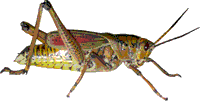Entomology Collections, Miscellaneous
Date of this Version
12-1945
Citation
Journal of the Washington Academy of Sciences, Vol. 35, No. 12, pp. 378-386.
Abstract
The important subfamily Dynastinae has for some time been relatively neglected, taxonomically speaking, and only in the past few years have new species been described or the larval characters of many species better characterized. In all collections I have seen,numerous United States species are grossly misidentified, and it is hoped that the present papers will help to rectify this condition.
Ritcher's paper (1944) is an excellent contribution to the immature stages of these insects. His title, however, Dynastinae of the United States, is very misleading, because this paper includes only a small proportion of the described United States species, and only those adults are mentioned of which he had larvae; thus, of the 18 described genera and 119 United States species listed as valid in Arrow's latest catalogue (1937) Ritcher treats the larvae and adults of but 12 genera and 20 species. Even though a number of these 119 names are not valid, many of them are important and well-known species and must be considered. Also, two generic and three specific names that Ritcher uses have been changed; regardless of these taxonomic errors, the paper is very important from an economic standpoint.
Casey's studies in this group have greatly enlarged our synonymy because of his practice of naming trifling variants, but at the same time his Memoirs (1915) gave more detailed information and pointed out more new characters and relationships than had. any of his predecessors or contemporaries, including Horn and LeConte; it is indeed too bad that Colonel Casey's idea of a "species" was not exactly that of the vast majority of coleopterists; otherwise his work in this family would have stood for some time. I have had the privilege of studying and dissecting all of Casey's scarab types through the courtesy of Dr. A. Wetmore and Dr. E. A. Chapin, of the U. S. National Museum, to both of whom I am indebted for many favors in the past.
The Dynastinae in most instances possess well-chitinized genitalia, and the characters of those of the male are very helpful in specific determination, and wider use should be made of them. Indeed, in such difficult genera as Cyclocephala, it is necessary to dissect and compare the male genitalia in order properly to place many of the troublesome variants.
Dynastine bibliography is now so long and detailed in most. genera that very little is to be gained by citing every unimportant reference; as this has already' been done in Arrow's catalogue of world Dynastinae. Thus, in the present series of papers, of which this is. the first of four, only the important ,bibliographical references have been selected and a list of those cited is given at the end..-of each paper. Keys to all tribes and genera will be given in the last paper of the series.
Genus Ancolnatha Erichson
Genus Dyscinetus Harold
Genus Cyclocephala Latreille
Aspidolea texana Hahne

